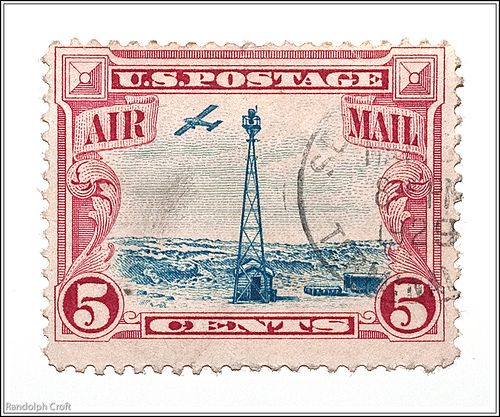The years between the late 19th Century and early 20th Century were an era of rapid technological advances, and communications were in on the revolution with the invention of the telephone and the radio. But for the Postal Service, it was more a time of extending the network and technologies that were already in place. Railroads reached all the way to the west coast, and were branching out from the main lines to almost every corner of the country where people were settling. The Panama Canal made delivery by steamship even faster and more economical. It was a time when innovation took a back seat to development.
That all changed when the seeds of innovation were planted by two brothers from Ohio at the end of 1903. The Wright brothers' first powered flight kicked off the era of air travel, and it was only a matter of time before the Postal Service would decide to use airplanes to transport the mail.
Early aviators were adventurers. Much like the young Pony Express riders before them, they faced great danger in their chosen profession. The first airplanes flew over a country in which automobiles were a novelty. Both forms of transportation relied on early gasoline-powered, internal-combustion engines, which were barely reliable enough to keep a car moving down the road. Aviation versions of those engines often used castor oil as a lubricant. Thanks to the open cockpits airplanes of the time used, that castor oil would travel through the exhaust and straight to the pilot's lungs, making many of them nauseous as they flew. The planes were underpowered, and easily tossed around by gusts of wind. Ninety horsepower, not even enough for an economy car today, was considered adequate for airplanes like the U.S. Army's Curtiss Jennies, the planes the USPS employed in its first airmail service in 1918.
The USPS's airmail trials, which lasted from 1918-1927, were intended to gauge the viability of using air travel as a means of rapidly transporting mail. Though automobiles and trucks were becoming ever more popular at the time, the pace of road construction had failed to keep up. Airplanes offered quick, mechanized travel without the need for roads, rails or waterways. In 1921, a letter was flown from San Francisco to New York City in just 33 hours, a considerable improvement on the Pony Express' 10 days. The Postal Service's experiment proved wildly successful, and as it wound down airmail service was taken over by civilian contractors.
Airmail would continue as a separate class of mail until the late 20th Century, when changing postal strategies and the commonplace nature of air travel would make aerial transportation little more than an accepted and economical way of moving mail over long distances.
![]() photo credit: RC_Fotos
photo credit: RC_Fotos
